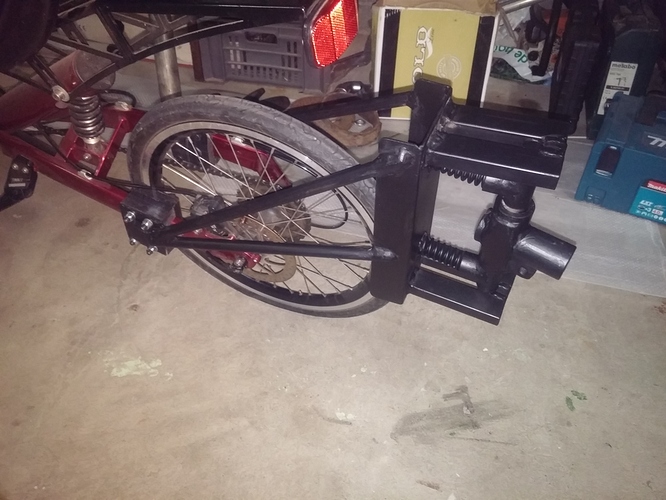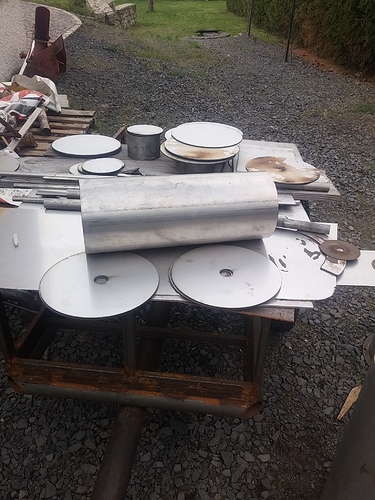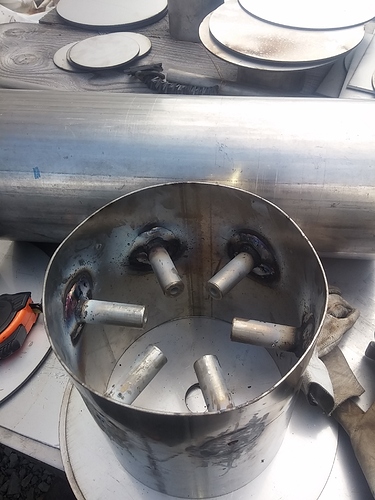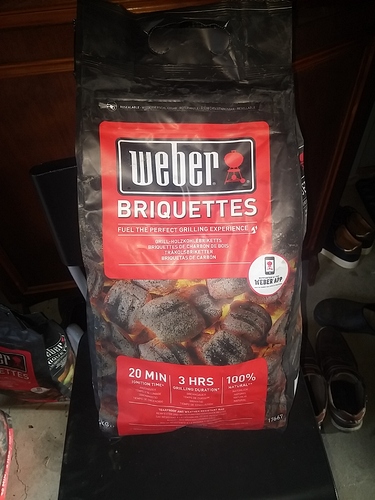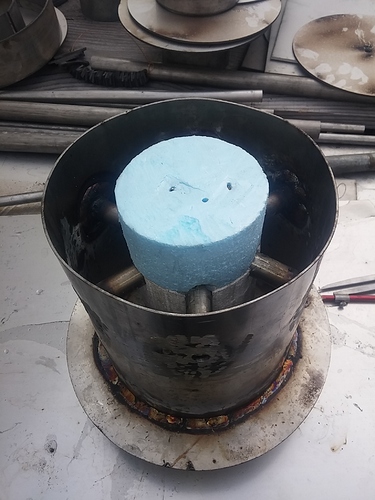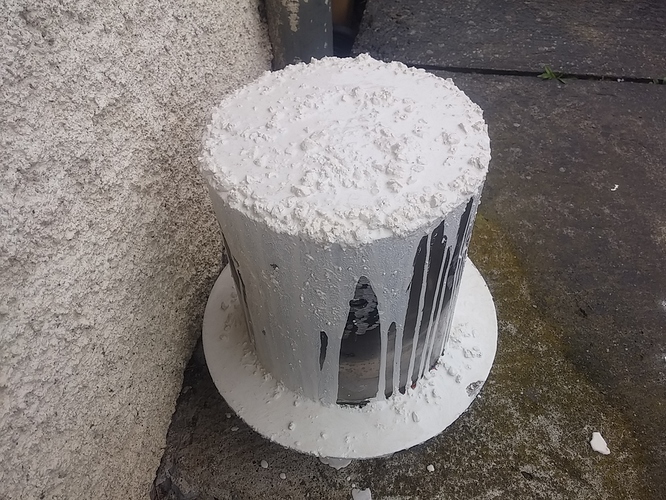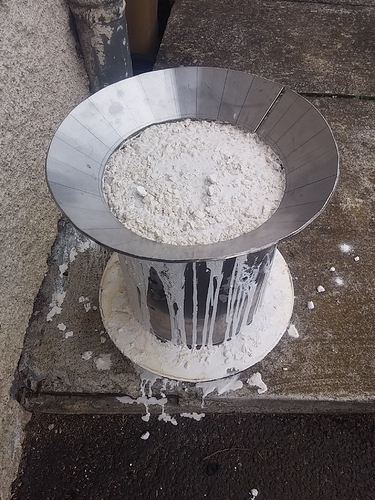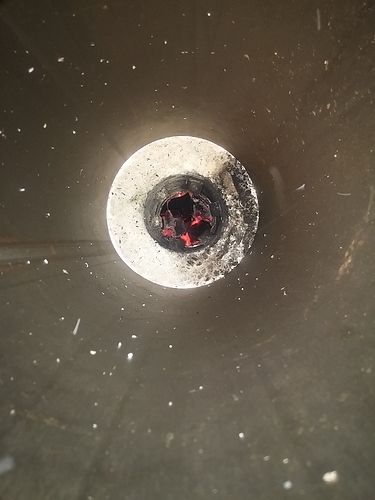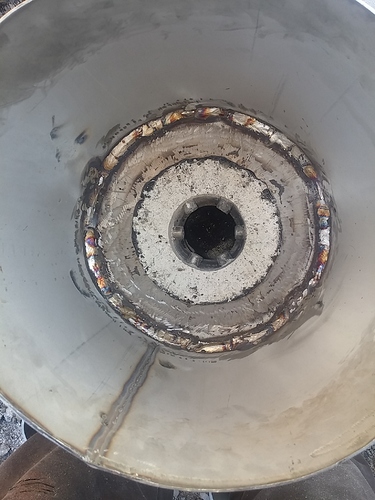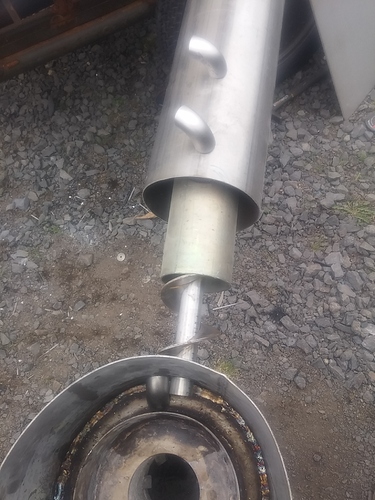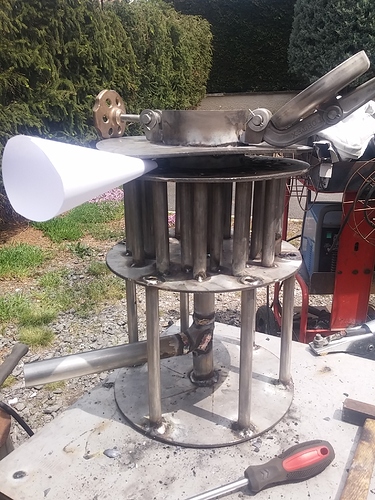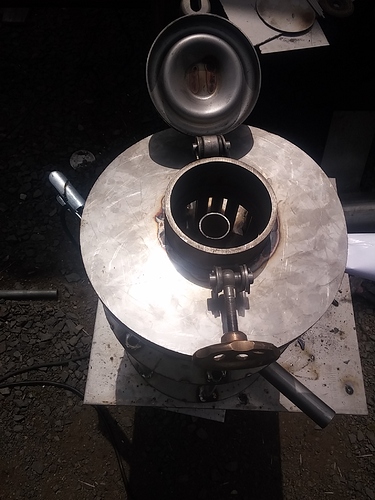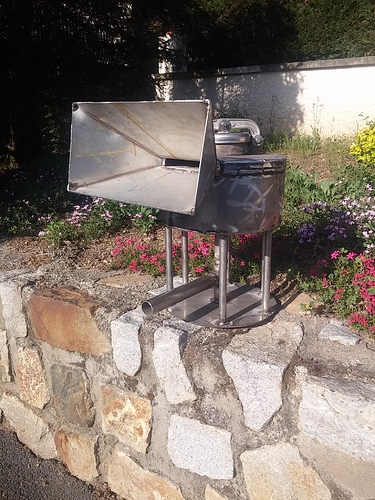finished hitch
The stainless steel parts are finished cut, now I have 15 days off, I will be able to advance a little faster.
Francois,
15 days off??! Yes, I am jealous! How does your recumbent bike / trailer rig handle normal riding and maneuvering (unpowered)? Just mounting a trailer to a recumbent is pioneering! I do not yet have a recumbent bike, but it is on my short list. Here is a group I sometimes hang out with.
http://www.recumbents.com/home/
and the Michigan “race”. I am usually the back marker! (last place finisher}. 
http://www.recumbents.com/wisil/calendar.asp
241/5000
Mike, I’m glad you’re interested in the project, but let me finish, I’ll obliquely make mistakes, that you will not do if you wait for me to finish it, here’s the welded air injectors on the diabolo .
François,
I’m sure we’re several interested in your project. I know I am. I was into recumbent bikes for a while. Never got one though, but I did a lot of pedaling until I got involved in gasification and got fat.
What dimentions are you aiming at in your gasifier? Your nozzles seem quite long. My experiance is ss can stand quite a lot of heat and pretruding nozzles aren’t as important since ss doesn’t seem to flake at all. But on the other hand that little motor will also need tiny gasifier internals and good insulation to keep the heat in.
Maybe you mentioned, but what fuel will you be running?
Jo-olsson, glad you too, you’re my project, I love Sweden, I went there in 2012,
the fuel is carbonite, that is to say the dust of charcoal passed to a press with a binder, pitch, and amodon pattate, 100% natural, a very good PCI and above all, that density, close to 1 tons per m3 knowing that the charcoal is much less dense, we do three times more KM,
I have attached a bag of charcoal balls, and the formwork for alumina to go up to high temperature, I take pictures at the progress of the construction, everything will be simple to understand.
Aha, I understand better now. It will be interesting to see how that casting holds up. I think it’s the same material my downdraft boiler’s throat/burn-chamber is made of.
When you do it yourself, you have to pay attention to two things, the right proportion of water to the mixture and the rise in temperature in three stages, to get the water out of the mass, for what it transforms into hydrogen with a raised in too high temperature that it will destroy in small explosions with the hydrogen the alumina part
Stainless circle for sealing between the fuel store and air chamber of the injectors, a slope is made to allow the flow with ease of carbonite.
Device between the reactor and the cooling of the gases, the central tube is the passage of the gases by aspiration which goes to the cooler, the screw of Archimedes with its envelope is the passage of the air with water which goes to the room injectors heated at its center by the passage of gasogen gas and by the third outer casing which will receive the engine exhaust gas, which suggests that the water will easily turn into steam, set by a taste to tastes.
Nos anciens connaissaient bien la réaction du craquage de l’eau en H2, où encore nommé gaz à l’eau, donc il faut réunir une température importante dans le réacteur, et pour cela que nous avons l’alumine, son rayonnement par son épaisseur maintient une haute température, autour de 1300 à 1500 degrés, les fumées de la carbonite avec la vapeur d’eau donne dans ces conditions un bon PCI du syngaz, mais il faut respecter une certaine proportion de CO et de H2, rien ne sert d’avoir trop de H2, car ils n’ont pas le même pouvoir détonnant, et il ne faut pas que le H2 s’enflamme avant le CO, cela provoquerai des cliquetis au moteurs et c’est pour cela qui faut introduire avec un réglage dans l’air, car trop d’eau en vapeur, refroidit le réacteur et il n’y a plus de craquage. la carbonite ayant un bon PCI(autour de 8500 calories), aide à atteindre de telle température, mais la monté en température de l’alumine est plus longue qu’un gazo type imbert en fer, du fait qu’il faut emmagasiner de l’énergie dans son épaisseur.
Translation per Google-
Our ancients knew well the reaction of the cracking of the water in H2, where still called gas with the water, therefore it is necessary to gather a temperature important in the reactor, and for that we have the alumina, its radiation by its thickness maintains a high temperature, around 1300 to 1500 degrees, fumes of carbonite with water vapor gives in these conditions a good PCI syngas, but must be respected a certain proportion of CO and H2, nothing serves have too much H2, because they do not have the same explosive power, and it is not necessary that the H2 ignites before the CO, it will cause clatter to the engines and it is for this which must be introduced with a setting in the air, because too much water in steam, cools the reactor and there is more cracking. Carbonite having a good PCI (around 8500 calories), helps to reach such a temperature, but the rise in temperature of the alumina is longer than a gaso type imbert iron, because it is necessary to store energy in its thickness.
PCI would be energy density.
Interesting observations/beliefs on CO and H2 proportions.
And unless I misunderstand this rough translation FrancoisP you NOT worshiping the great God of Hydrogen mirrors my experiences as an internal combustion engine fuel. Some H2 is OK-fine. In-balance with carbons fuels components is what give the real world loaded engines usability.
Ha! Ha! We can be burnt at the modern energy political correctness stake for not bowing down, kneeling and genuflecting to a purely hydrogen approach, you know. Carbon is the new Devil now. (unless it gitters as a Fancy’s show-off gem)
S.U.
Le pouvoir calorifique inférieur (PCI, en anglais : lower heating value
Hello Steve U,
You are for me, a man of great wisdom who with simple words, give explanations of great consistency.
and excuse me for my english, i only use google.
Best regards.
François Pal
The cooler to densify the syngas, so it is in three stages, the lower one makes up the gas from the bottom of the cooler by the 6 pipes, the intermediate stage receives the gases of the 6 pipes in its perimeter, the gas will cool it on contact 26 pipes cooled by the passage of fresh air from the chamber of compression of the top, fed by a cone which the recumbent bicycle in motion is filled with air, and in its center the redécente of the cooled gas which is born under the cover even finally to concentrate the reassembly of the gases of the chilling intermediate chamber.
Hi François
This is a very interesting idea to compensate for the loss of charge of the gasifier.
I am interested, is the energy consumed to push this funnel in air will be equal to the energy gained by the gasifier?
What do you think ?
Does this design come from your imagination? 
Thierry
